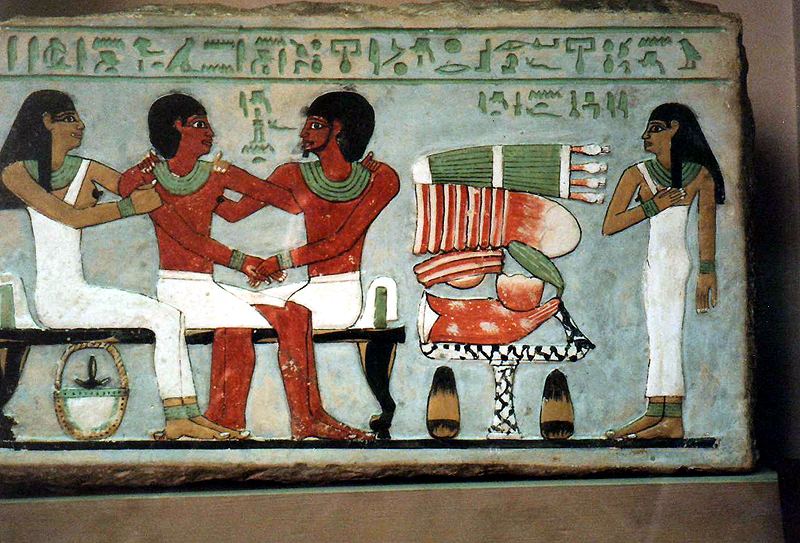
Funeral Stela of Amenemhat
painted limestone
Egyptian Museum, Cairo
Inventory number JE45626, from Assasif (tomb R4)

|
Funeral Stela of Amenemhatpainted limestone
|
In this 12th dynasty tomb painting, the deceased Amenemhat1 is embraced by his living father Intef and his deceased mother Iy, as his living sister Hapy looks on from the right. We know this from a close reading of the offering formula to the deceased above the figures, and the name-and-relationship hieroglyphs beside the living figures. Upon the offering table, succulent cuts of beef are piled up with garlic, vegetables, and bread for the sustenance of the deceased in the afterlife.
The Amenemhat in this relief was a Middle Kingdom noble, not a pharaoh. Don't confuse the two! "Amenemhat" means "Amun is the foremost." This name was taken by pharaohs in honor of the god Amun (theophoric), but also by nobles to honor a ruler of the same name (basilophoric). For example, in modern times, "Jesus" (Spanish) is theophoric and "Lincoln" (mostly southern U.S.) is basilophoric.
1Also spelled Amenemhet. For historical reasons, the spelling of ancient Egyptian in English is highly variable, and quite frankly is neither logical nor consistent. An e-a alteration is often observed, for example Ra-Re and Amenemhat-Amenemhet. The great god Amun is often spelled Amen, Sakhmet as Sekhmet, and so many other variations that space is lacking here, or indeed anywhere else, to describe them all.
It was an absolute convention of Egyptian art that the chest should be shown from the front and the head should be shown from the side, as seen here and on every other known relief from ancient Egypt - with one exception - a true side view on a cosmetic box of Tutankhamun.

|

|

|